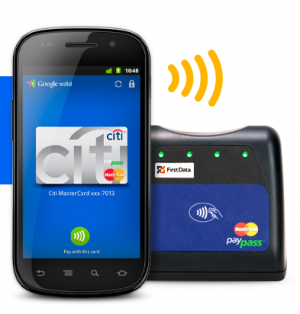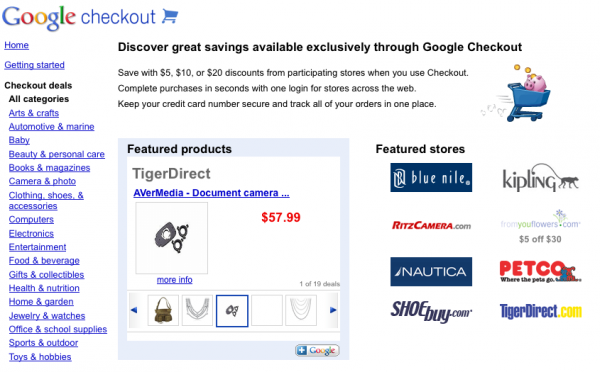Google Checkout Is Dead, Long Live Google Wallet
Yesterday Google Checkout users were notified that it was being merged into and replaced by Google Wallet. This makes sense on every level. From a ‘brand” and visibility standpoint Wallet is a more successful product already. Checkout was introduced in June, 2006 (it was rumored to be called “GBuy” ahead of launch). It was directed […]
 Yesterday Google Checkout users were notified that it was being merged into and replaced by Google Wallet. This makes sense on every level. From a ‘brand” and visibility standpoint Wallet is a more successful product already.
Yesterday Google Checkout users were notified that it was being merged into and replaced by Google Wallet. This makes sense on every level. From a ‘brand” and visibility standpoint Wallet is a more successful product already.
Checkout was introduced in June, 2006 (it was rumored to be called “GBuy” ahead of launch). It was directed at both consumers and merchants. Checkout was also intended to be tightly integrated with AdWords. Online retailers or stores that used AdWords received favorable payment processing terms.
In some ways it was Google’s answer to PayPal but it was also different in a number of respects (it didn’t allow peer to peer transactions for example). PayPal owner eBay at the time took it very seriously as a threat and did a great many hostile things, such as refusing to allow Checkout on eBay and pulling its AdWords advertising in protest.
There was a bit of a replay of that fracas when earlier this year eBay sued Google over two former PayPal executives who helped launch Google Wallet.
Checkout was never really explained or marketed to consumers — Google did run lots of online ads directed toward AdWords advertisers and merchants however. In addition, for a couple of years, AdWords advertisers using Checkout were permitted to put an icon/button in their ads making them more prominent than competitors’ ads.
Consumers were the key to Checkout’s success, however, and they really never adopted it in large numbers. We don’t really know how many Checkout users there are today but it has got to be very small by comparison to PayPal, for example.
Google also flirted with making Checkout a shopping portal but didn’t commit to that because it had Google Shopping/product search. The strategy around Checkout was thus muddy and ineffectual.
The failure to “sell” Checkout to consumers came back to haunt Google later after the Android Market launched and there was no widely adopted, easy-to-use iTunes-like system to pay for apps. Android developers became frustrated that they couldn’t monetize very well on Android. Google and its carrier partners offered a patchwork of methods to pay for apps (i.e., carrier billing). None of this worked particularly well for Google or developers.
Google is a much different company today than it was in 2006. It recognizes and appreciates the value of marketing products to consumers. Its Google Wallet launch and subsequent marketing reflect that greater sophistication.
One thing that’s not clear is whether those with existing Checkout accounts will automatically have their payment cards incorporated into Wallet. That’s my guess. Google said in an email, “Buyers will be able to make purchases with their existing accounts at sites that accept either Google Checkout or Google Wallet.”
Google Wallet is off to a fairly strong start (from a visibility standpoint at least) and will ultimately prove to be a much more successful product than Checkout turned out to be.
Contributing authors are invited to create content for Search Engine Land and are chosen for their expertise and contribution to the search community. Our contributors work under the oversight of the editorial staff and contributions are checked for quality and relevance to our readers. The opinions they express are their own.
Related stories
New on Search Engine Land

